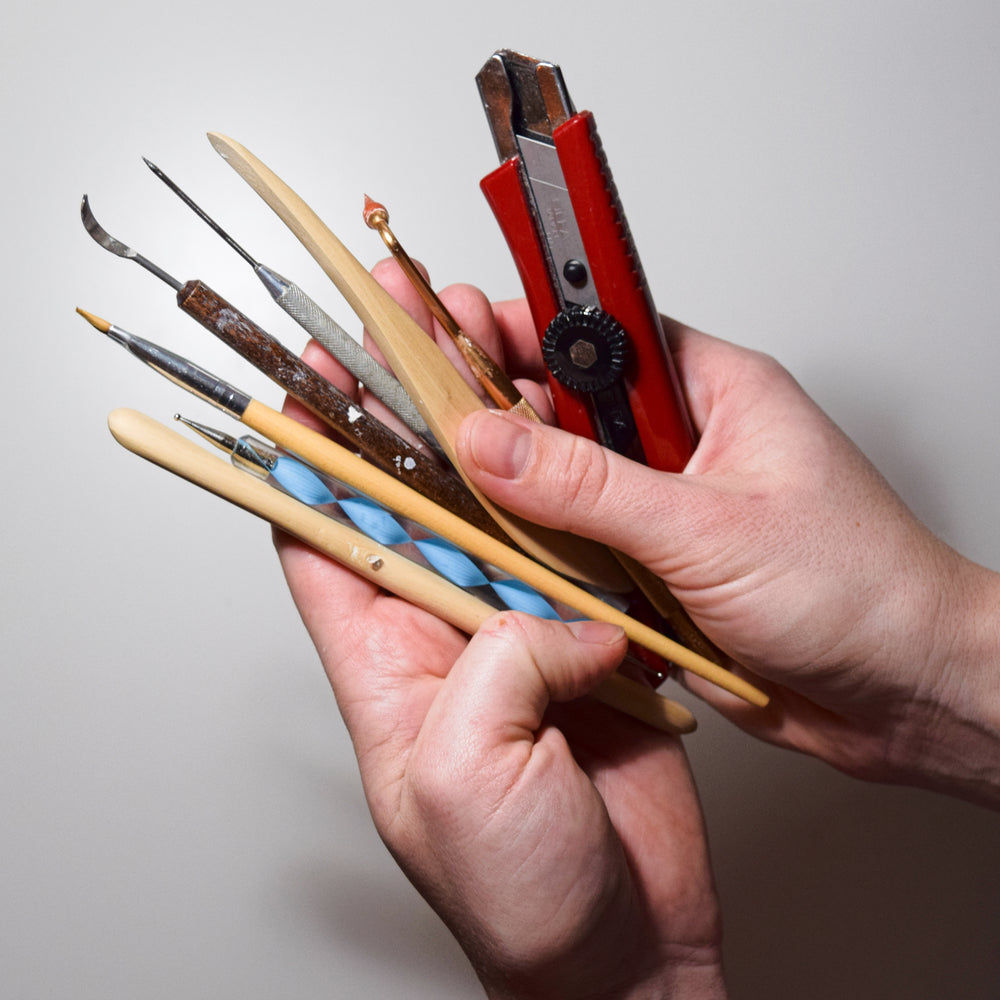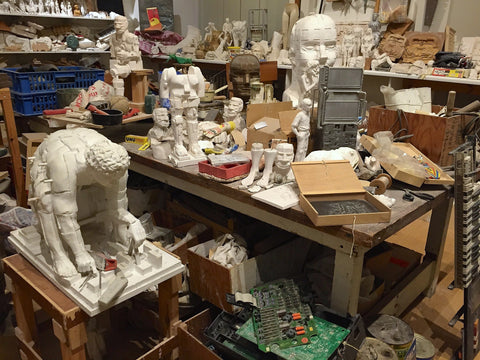
Disclosure: This post contains some affiliate links. I may earn a small commission at no extra cost to you, supporting my blog and content creation. Thank you!
---
Welcome back to our series on starting your sculpture journey from home. In my previous articles, we explored the basics of getting started with sculpture and finding your medium for sculpting from home. Now, it's time to dive deeper into the essentials of setting up your home sculpture studio.
In this article, we'll cover some (potential) must-have tools and safety considerations to help you create a productive and safe workspace.
Tools of the Trade
When it comes to sculpting, creating a piece is more like building a structure than painting a portrait. As an artist, you're also an engineer, assembling internal support systems and utilizing tools that wouldn't be out of place in a mechanic's garage. So, let's get down to business and explore the essential hardware you'll need for sculpting.
Each sculpting medium has its unique requirements, and over the years, I've found the following tools to be invaluable in my practice:
Cutting and Shaping Tools:
- Utility (X-acto) knife: A versatile tool for cutting and carving. I have two types: 1) a robust utility knife, but not too heavy duty, for most jobs, and 2) a fine craft for carving details in the clay once dry.
- Self-healing cutting mat: A must-have to protect your surfaces (especially if your dining table doubles as your workspace), and prolongs the life of your X-acto blades.
- Scissors: This one goes without saying. Just don't use them to cut wire; you'll dull them rapidly.
- Pliers and wire cutters: Essential for working with wire and creating armatures. I like the ones that combine both tools together.
- Ruler: Metal rulers are my preference as they tend to last longer and I can use utility knives without worry that I'll cut into it.
Adhesives and Fasteners:
- Handheld power drill: Various applications, but I mostly use it to make holes in wood bases to mount my sculptures.
- Glue: A sculptor's best friend. I keep an assortment on hand – epoxy glue, superglue, white glue, wood glue, and hot glue – each serving a different purpose.
- Tape: I like masking and electrical tape.
Miscellaneous:
- Wire: No matter what type of material you are working with, you will likely need some. More about wire for sculpting in air dry clay.
- Cheap paint brushes: The no-frills ones from the dollar store work wonders for applying glue, sculpting, and eventually painting a sculpture. I find filbert-shape brushes to be the best, as they leave minimal marks in the clay.
- Wooden skewers: I refer to those usually used in cooking. I find them useful as sculpting tools, but also for applying glue to precise locations.
A word to the wise: don't rush out and purchase a truckload of tools. Start small, and as your sculpting skill evolves, so too will your toolbox. Art can become an expensive endeavor, so manage your resources wisely. If you need a tool once, consider making instead of buying.
Improvise with what you have until you genuinely need a tool. It's incredibly satisfying to craft something beautiful with a $1 brush rather than a $25 one from the art store. Plus, the cheaper version is replaceable, taking away the fear of ruining it. You'll be amazed at what you can accomplish with a little resourcefulness.

Home Studio Safety & Cleanliness
As an artist working from home, you're not exempt from health hazards. Traditional art studios are often separate from living quarters due to the toxicity of some materials. However, for home artists, this might not be feasible, which means adaptations are necessary. For example, the dust produced by dried ceramic clay can be hazardous to health over time. Before setting up your sculpting space, consider the safety implications of your chosen medium. This is especially important if your home is shared with children or pets.
For instance, if your workspace is the dining room table, opt for materials that are easy to clean, non-toxic, and produce no vapors. A garage or basement with good ventilation, on the other hand, affords more flexibility. Research is key! Look into safe alternatives to toxic materials, and don't be afraid to seek advice from more experienced artists.

Creating art at home requires a delicate balance between safety and cleanliness. Be mindful of the materials you use, and take steps to minimize risks. With a little planning and awareness, you can enjoy a safe and creative sculpting experience in the comfort of your own home.
What's Next?
Get inspiration for your own artist space at home


